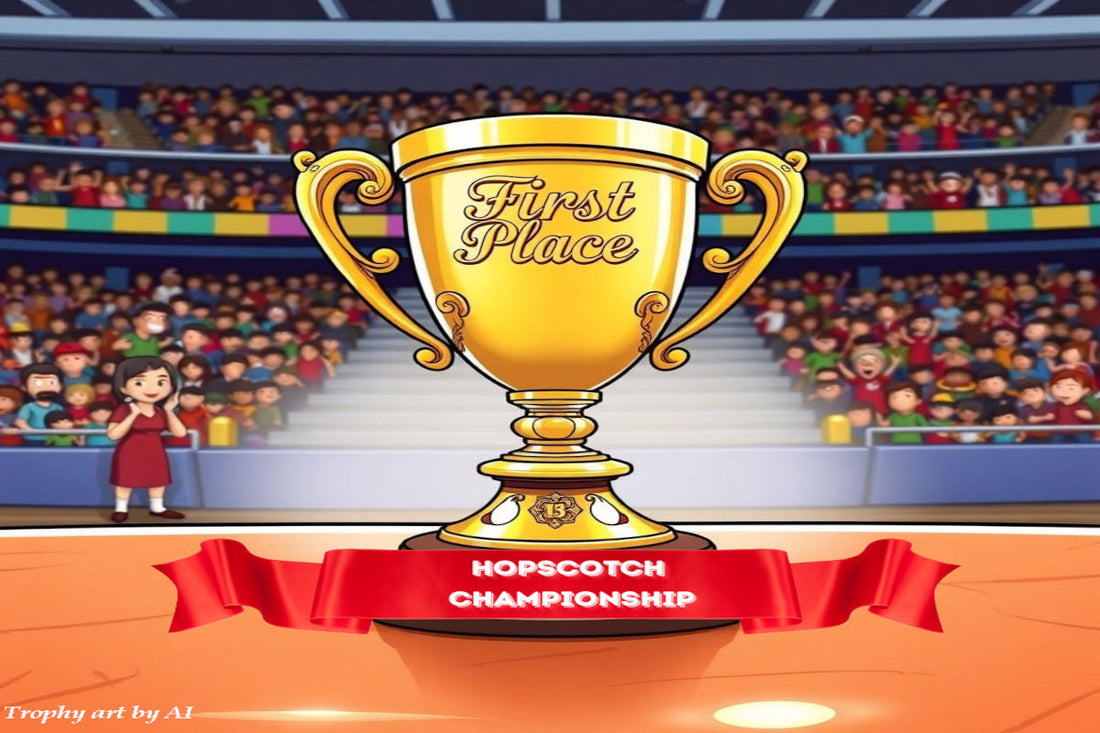
Jump Into Fun - Rediscovering the Magic of Hopscotch
Hopscotch, a classic playground game that has delighted children for generations, boasts a rich tapestry of variations that reflect cultural differences, regional adaptations, and creative modifications. This article explores the various types of hopscotch games, their unique rules, and notable tournaments where players can showcase their skills.
Introduction to Hopscotch
Hopscotch is a game that combines physical activity with spatial awareness, making it an engaging pastime for young players. Traditionally, the game involves drawing a series of numbered squares on the ground and tossing a marker, usually a stone or a coin, into the squares while hopping on one foot or both. The simplicity of the game has allowed it to adapt and evolve across different cultures, leading to a fascinating array of variations.
Types of Hopscotch Variations
Traditional Hopscotch: The most recognized form of hopscotch, often played on a chalk-drawn grid that consists of a series of numbered squares. Players must hop through the squares on one foot while avoiding touching the lines.
French Hopscotch: In France, hopscotch takes on a spiral shape, resembling a snail (escargot). The player hops along the spiral, which is divided into numbered sections, with the challenge increasing as they reach the center.
Korean Hopscotch: This variation features a more intricate pattern often drawn with chalk. Players must toss a stone onto the grid and hop around it while following specific rules related to the stone's placement.
Italian Hopscotch: Italian children often play a version that incorporates a circular pattern instead of the traditional squares. Players must hop in a circular motion, which adds a unique challenge compared to linear formats.
Spanish Hopscotch: In Spain, the game is often played with varying grid designs, sometimes incorporating multiple colors and additional rules, such as jumping to specific squares based on a player’s height.
American Variations: In the United States, hopscotch can vary widely by region. Some versions include additional elements like obstacles or different hop styles (e.g., hopping backward or using both feet).
Beach Hopscotch: Played on sandy beaches, this variation features larger grids and is often a more casual version of the game. Players use shells or beach stones as markers, and the soft sand adds an element of difficulty.
Giant Hopscotch: In various festivals or community events, enormous hopscotch grids are created, allowing multiple players to participate simultaneously. This version often incorporates vibrant colors and fun themes, making it visually appealing.
Digital Hopscotch: With the advent of technology, digital versions of hopscotch have emerged in the form of apps and online games. These often include animated characters and challenges that add a modern twist to the traditional game.
Obstacle Hopscotch: Some variations introduce physical challenges alongside the traditional hopping, such as cones to weave through or hurdles to jump over. This style emphasizes agility and coordination.
Tournaments and Competitions
Hopscotch may seem like a simple children's game, but it has gained recognition in the competitive realm, particularly in certain countries. Tournaments often celebrate both traditional and modern variations of the game, offering a platform for players to demonstrate their skills.
World Hopscotch Championships: Held annually in various locations, these championships invite participants from across the globe to compete in both individual and team events. The competition typically features multiple hopscotch variations, showcasing different cultural styles.
National Hopscotch League (NHL): In the United States, the NHL organizes regional tournaments where players can qualify for national events. These competitions often include a mix of traditional hopscotch and innovative variations, attracting a diverse crowd.
Hopscotch Festivals: Many communities host hopscotch festivals, where players of all ages can participate in friendly competitions, workshops, and demonstrations. Events like these often emphasize the social aspect of hopscotch, promoting community engagement.
School Championships: Many schools host annual hopscotch tournaments as part of their physical education curriculum. These events encourage teamwork and sportsmanship among students while celebrating the joy of play.
Cultural Celebrations: In countries like France and Spain, hopscotch is often featured in cultural festivals, where local variations are highlighted, allowing players to showcase their skills in front of enthusiastic audiences.
The world of hopscotch is as diverse as the cultures it represents. From traditional square grids to innovative variations that incorporate unique challenges, hopscotch continues to evolve and captivate players of all ages. Tournaments and competitions elevate the game from playground fun to celebrated events, fostering community spirit and encouraging a love for this timeless pastime. As we continue to embrace and adapt hopscotch, its legacy as a cherished game remains secure, inviting future generations to join in the joyful leaps and bounds of play.
Story by AI
